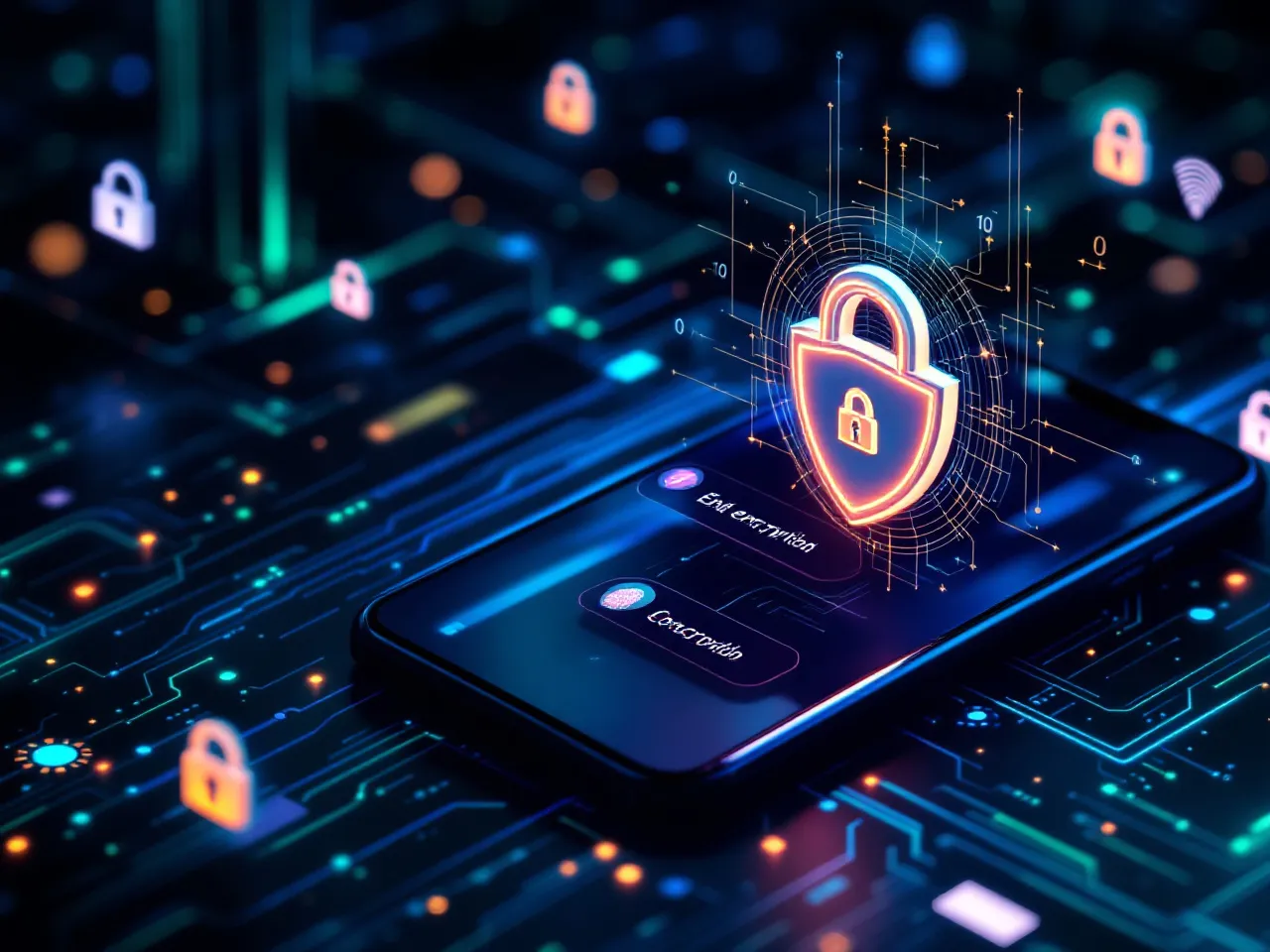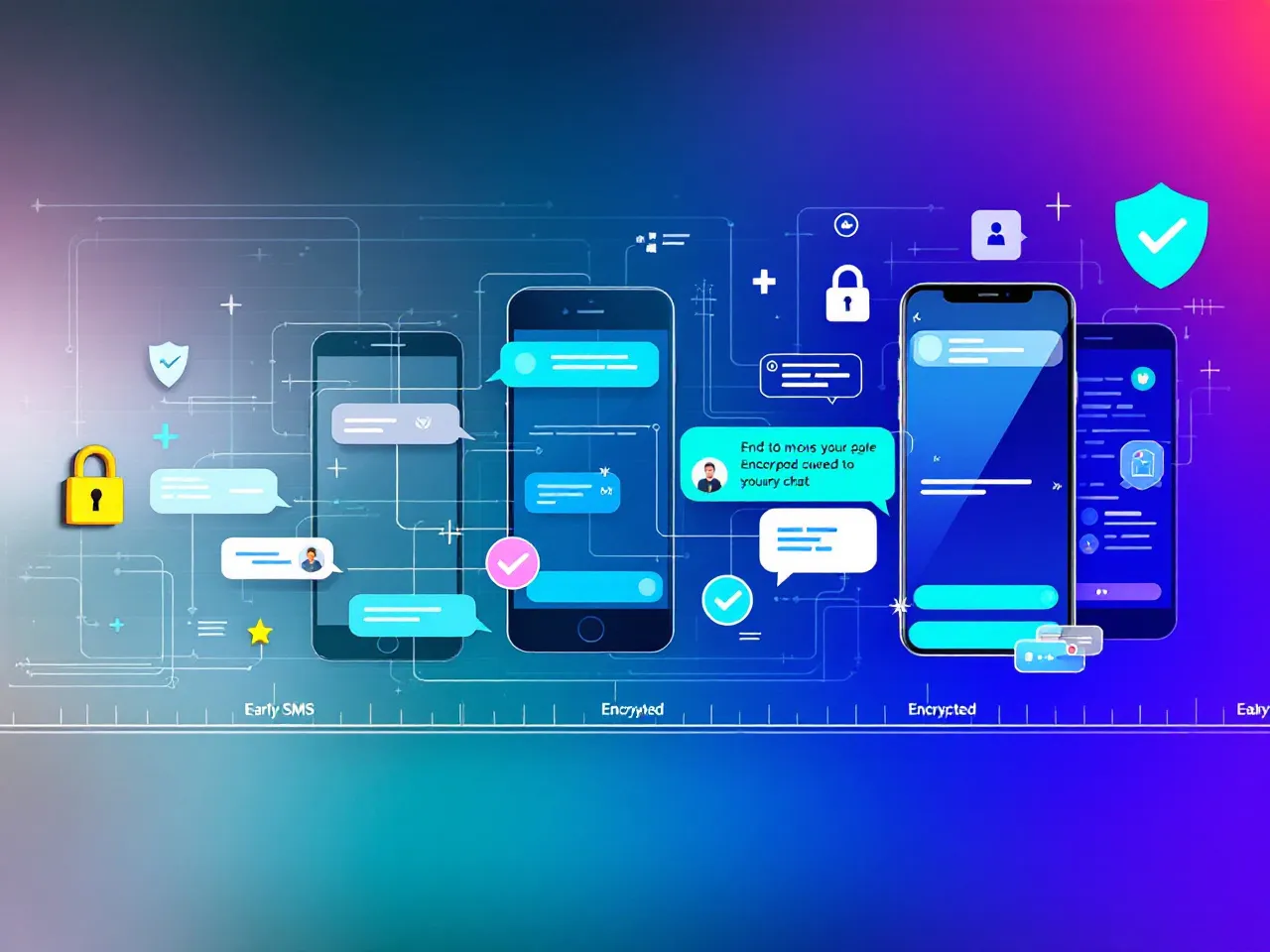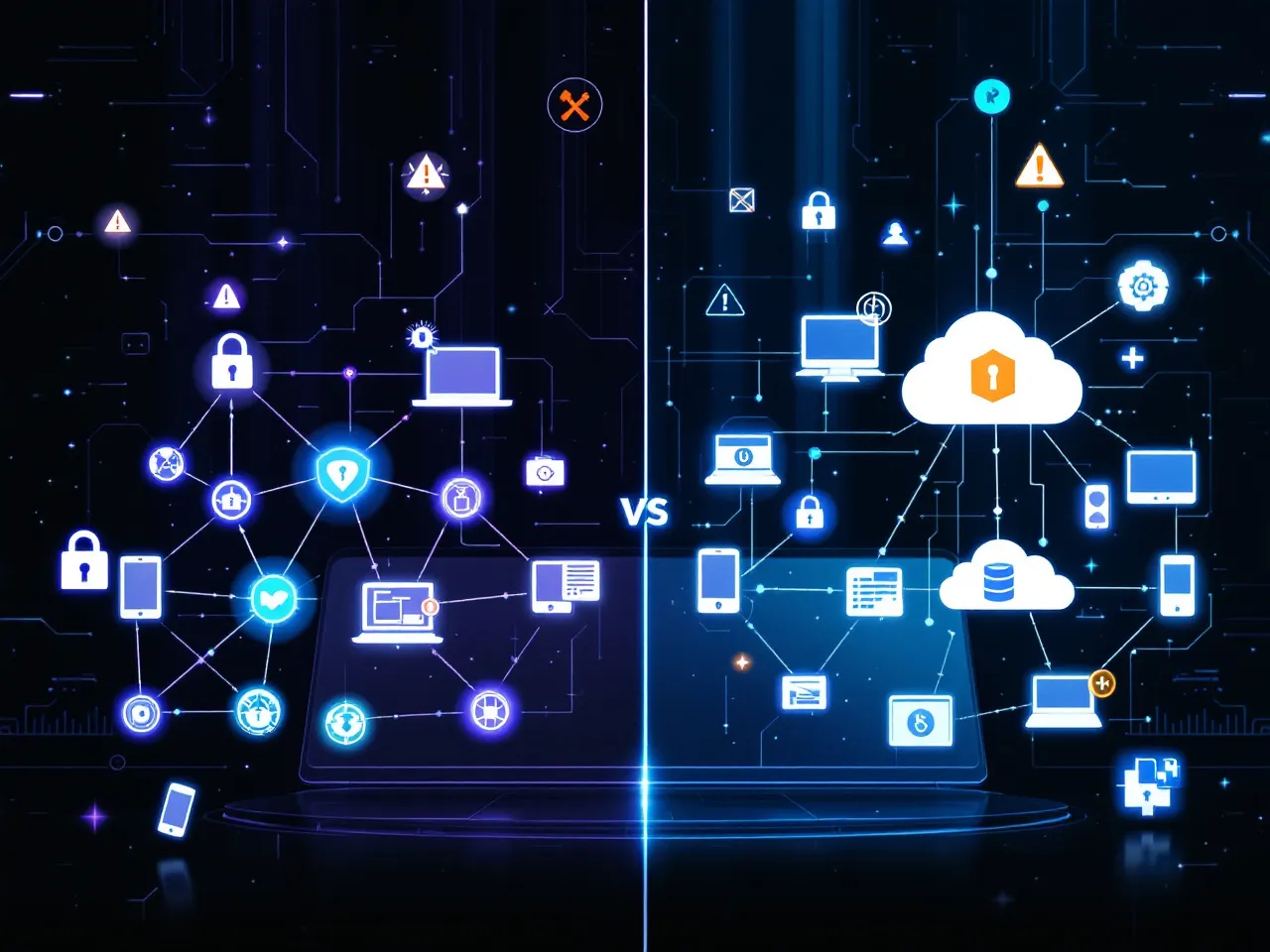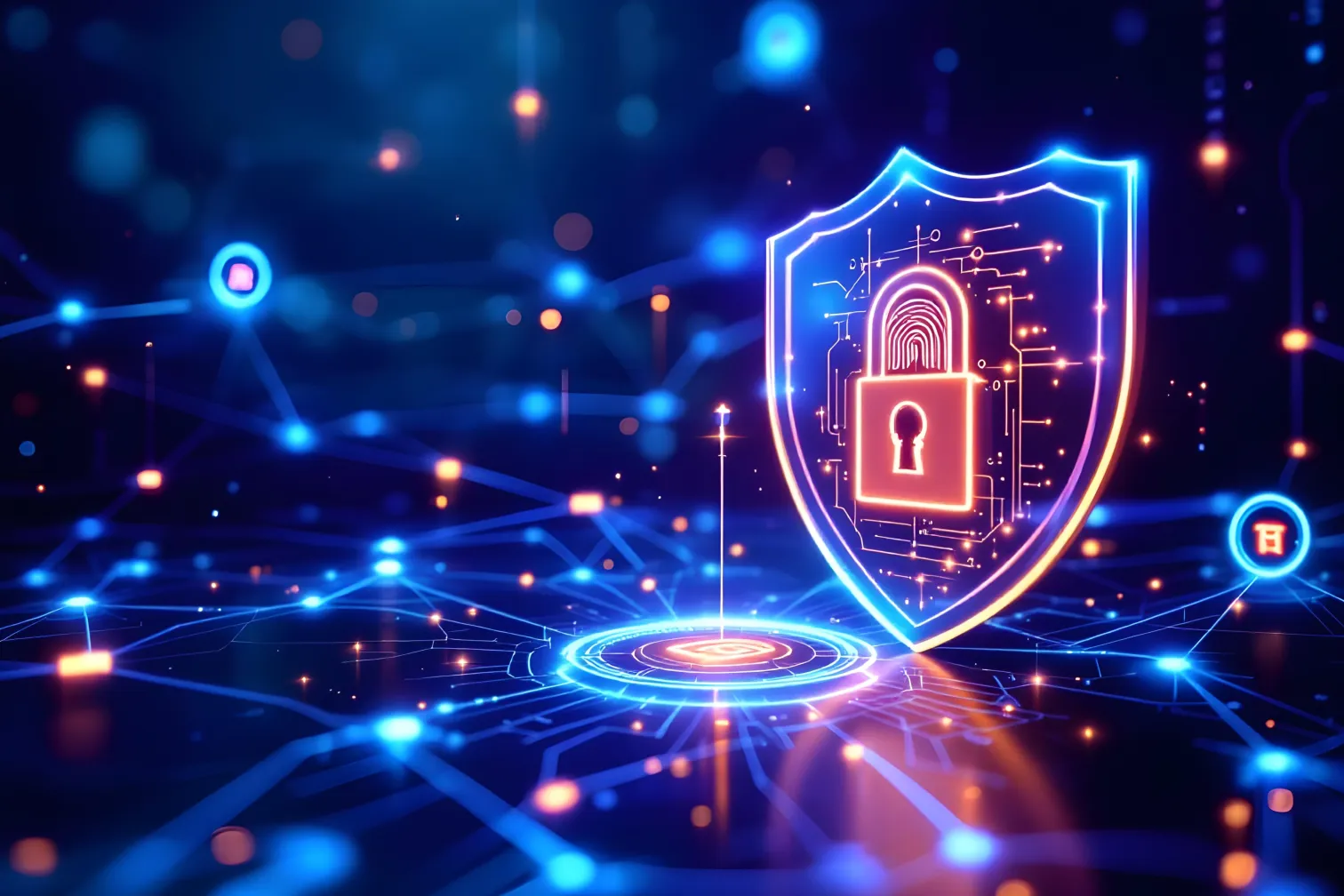The Role of End-to-End Encryption in Modern Communication
POSTED
3 weeks ago
AUTHOR
Mayur Shinde
DATE
March, 27 2025

In an era defined by digital connectivity, the security of our communications has become paramount. From casual chats to sensitive business transactions, we entrust vast amounts of personal and professional information to online platforms. But how can we ensure that these exchanges remain private and protected from prying eyes? The answer lies in a powerful tool: end-to-end encryption.
Understanding End-to-End Encryption (E2EE)
End-to-end encryption is a method of secure communication that prevents third parties, including internet service providers, application providers, and even governments, from accessing data while it's being transferred from one end to another. Simply put, when you send a message or make a call using E2EE, it's encrypted on your device and can only be decrypted by the intended recipient on their device.
Imagine sending a letter in a locked box. Only the sender and the receiver possess the key to unlock it. This is the fundamental principle of E2EE. The data is scrambled into an unreadable format using cryptographic keys, and only the recipient's device holds the key to unscramble it back into its original form.
Why is E2EE Crucial in Modern Communication?
The proliferation of digital communication has brought immense convenience, but it has also introduced significant security risks. Here's why E2EE plays a vital role:
- Protecting Privacy: In a world where data breaches and surveillance are commonplace, E2EE provides a crucial layer of privacy. It ensures that your conversations, messages, and files remain confidential, shielding them from unauthorized access.
- Safeguarding Sensitive Information: E2EE is essential for protecting sensitive information, such as financial details, medical records, and legal documents. It prevents these data from falling into the wrong hands, mitigating the risk of identity theft, fraud, and other malicious activities.
- Enhancing Trust and Security: By ensuring that only the intended recipients can access the content of their communications, E2EE fosters trust and security in online interactions. This is particularly important for businesses, which rely on secure communication to protect confidential information and maintain client trust.
- Combating Surveillance: E2EE plays a crucial role in combating mass surveillance by governments and other entities. It empowers individuals to communicate freely without fear of being monitored, safeguarding their fundamental rights and freedoms.
- Protecting Against Man-in-the-Middle Attacks: In a man-in-the-middle attack, a malicious actor intercepts communication between two parties. E2EE effectively thwarts these attacks by ensuring that the data is encrypted throughout its journey, making it unreadable to the attacker.
How E2EE Works: A Simplified Explanation
While the technical details of cryptography can be complex, the basic principle of E2EE is relatively straightforward:
- Key Generation: When two users initiate a communication session, their devices generate unique cryptographic keys.
- Encryption: The sender's device uses the recipient's public key to encrypt the message or data.
- Transmission: The encrypted data is transmitted across the internet.
- Decryption: The recipient's device uses their private key to decrypt the data, making it readable.
The crucial aspect is that the private keys remain exclusively on the users' devices and are never shared with the service provider or any third party. This ensures that only the intended recipients can access the decrypted data.
Popular Applications Utilizing E2EE
Many popular messaging and communication platforms have implemented E2EE to protect their users' privacy. Some notable examples include:
- WhatsApp: WhatsApp's default E2EE ensures that all messages, calls, photos, videos, and documents are encrypted.
- Signal: Signal is renowned for its strong emphasis on privacy and security, using E2EE for all communications.
- Telegram (Secret Chats): Telegram offers optional "Secret Chats" that utilize E2EE, providing enhanced privacy for sensitive conversations.
- iMessage (Apple): iMessage uses E2EE when both users are using Apple devices.
- Zoom (Meeting E2EE): Zoom offers an option for end-to-end encryption for meetings.
Challenges and Considerations
While E2EE is a powerful tool for protecting privacy, it also presents some challenges:
- Law Enforcement Access: E2EE can hinder law enforcement investigations by making it difficult to access communications related to criminal activity. This has led to ongoing debates about balancing privacy and security.
- Key Management: Securely managing encryption keys is crucial. If a user loses their private key, they may lose access to their encrypted data.
- Metadata: While E2EE protects the content of communications, it may not protect metadata, such as the sender and recipient's identities, timestamps, and location. This metadata can still reveal valuable information.
- Implementation Complexity: Implementing E2EE effectively requires careful design and implementation to avoid vulnerabilities.
The Future of E2EE
As concerns about privacy and security continue to grow, E2EE is likely to become even more prevalent in modern communication. Ongoing advancements in cryptography and key management are addressing some of the challenges associated with E2EE, making it more robust and user-friendly.
Conclusion
End-to-End encryption is a vital tool for protecting privacy and security in modern communication. By ensuring that only the intended recipients can access the content of their communications, E2EE empowers individuals and organizations to communicate freely and securely in an increasingly interconnected world. As technology evolves and threats to privacy persist, E2EE will continue to play a crucial role in safeguarding our digital interactions.
Tags: end-to-end encryption, E2EE, privacy, security, digital communication, encryption, data protection, online security, messaging security, cybersecurity, data privacy, man-in-the-middle attack, cryptography, WhatsApp, Signal, Telegram, iMessage, Zoom
Recent Posts

Powerful PDF Tools Online: Boost Your Workflow with SuperFile.ai
1 week ago

SuperFile.ai: Your Free Financial Calculator Toolkit
1 week ago

Tracing the Evolution of Secure Messaging
2 weeks ago

Peer-to-Peer File Sharing vs. Cloud Storage: Which Is More Secure?
1 month ago

How Peer-to-Peer Communication Redefines Online Privacy
1 month ago

Calculate Recurring Deposit Returns Easily with a Free Online RD Calculator
2 months ago
